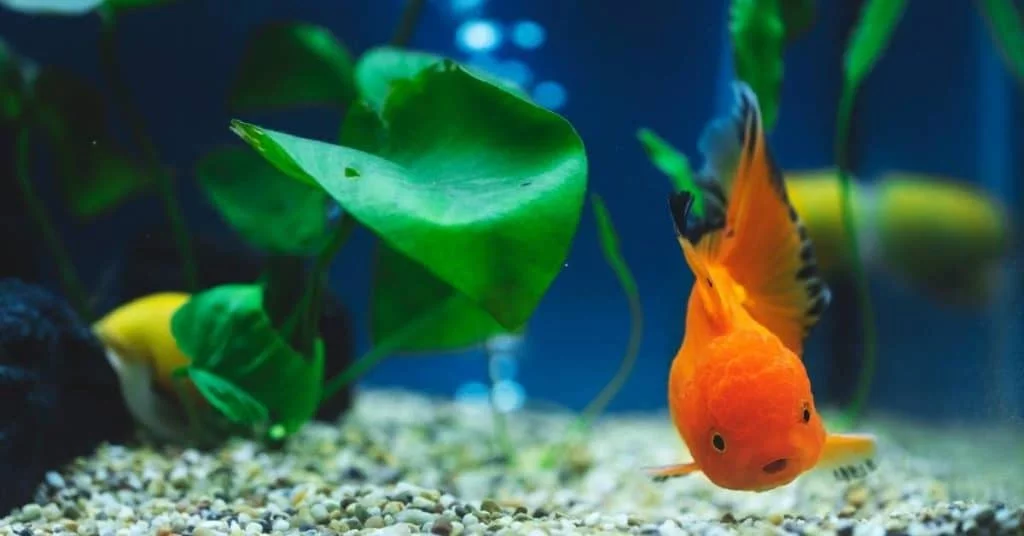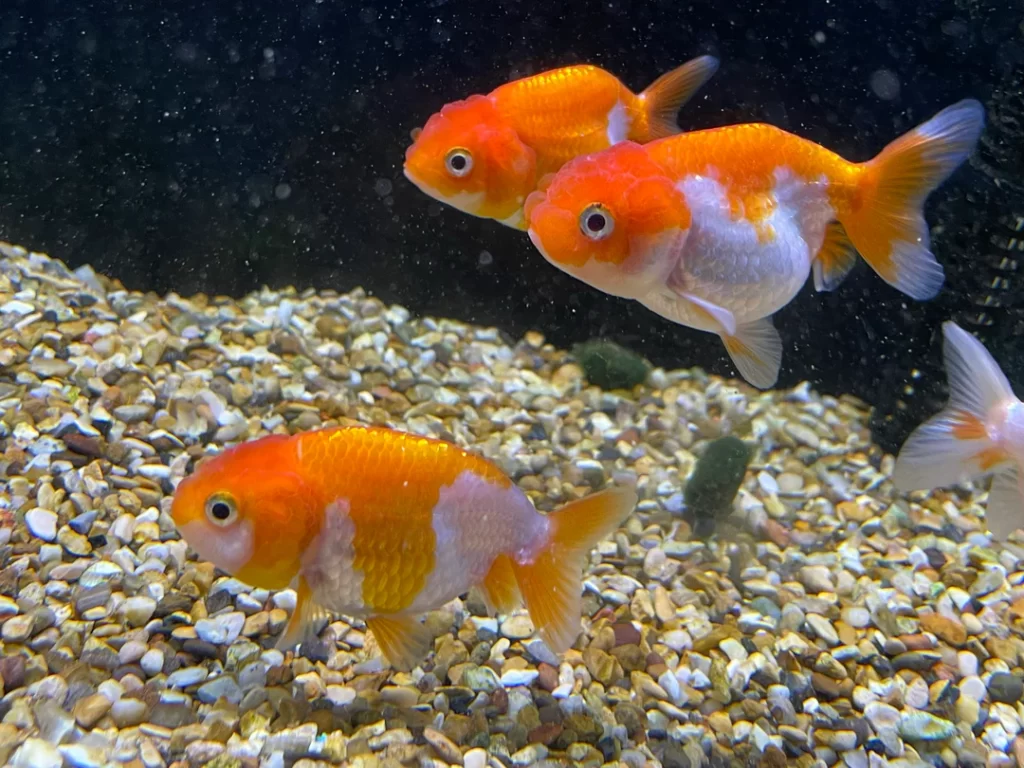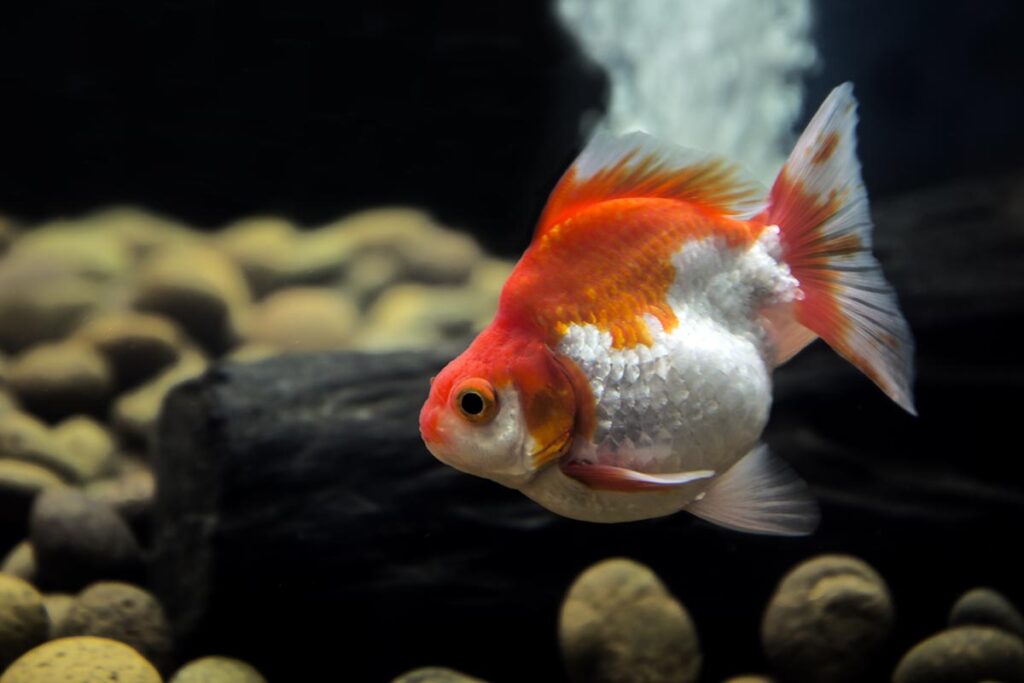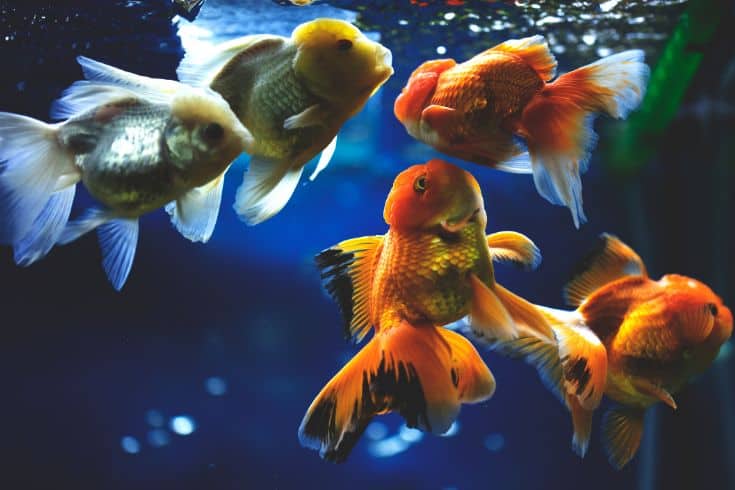
New Tank Syndrome is a term that puzzles many novice fish owners, particularly when they notice their new aquatic pet appearing stressed in its pristine new home. The world of aquariums is complex, and understanding the underlying causes of such issues is crucial for the well-being of your aquatic companions.
Consider the goldfish, a species cherished for its captivating beauty, but notoriously susceptible to this enigmatic syndrome. In this guide, we will delve into the connection between these iconic fish and New Tank Syndrome, shedding light on why goldfish are so vulnerable to it. In the realm of aquariums, knowledge is the key to prevention, and understanding is the first step towards a healthy aquatic environment for your pets.
Understanding New Tank Syndrome

Ever moved into a new house and felt disoriented? Your goldfish probably feel the same when introduced to a new tank, causing something called ‘New Tank Syndrome’. Now, before you rush to find a goldfish psychologist, let’s unpack this.
What is New Tank Syndrome?
New Tank Syndrome is the bane of every freshwater aquarium newbie. It’s a situation where your new fish tank becomes a hostile environment rather than a fish paradise. It often happens when the tank hasn’t been adequately setup, causing a rapid and deadly fluctuation in water parameters. In a nutshell, we’re talking Fish Apocalypse here, folks!
Causes of New Tank Syndrome
Now, you’re probably thinking, “I bought the fancy tank and installed a cool little bridge.” But hold on! That isn’t enough. Sudden death and illness can occur due to high levels of ammonia and nitrite. These nasty guys can skyrocket in new tanks due to a lack of beneficial bacteria that neutralize them. They’re much like the horrible neighbor who insists on playing heavy metal at three in the morning.
We’ve gotten a good grip on what New Tank Syndrome is about and its causes. Next, let’s explore how it affects our watery friends, particularly goldfish.
Links Between Goldfish and New Tank Syndrome

Swimming in circles, aren’t we? So, you’ve probably grasped the is-it-contagious-bacteria or is-it-an-alien invasion concept of New Tank Syndrome (NTS). Now let’s plunge into the pet store aisle brimming with shiny goldfish. How does this notorious NTS ties in with our beautiful, golden friends? Let’s see.
Effects of New Tank Syndrome on Goldfish
Just imagine—being moved from roomy, controlled ponds into cramped, quite literal fish-out-of-water scenarios. Sounds traumatic, right? That’s exactly how goldfish feel when plopped into a new tank. Fluctuating water parameters cause stress, making them act weird or, worse, fall sick. Basically, if Dory had a third sequel, it would be called “Escape from New Tank Syndrome.”
The harsh reality is that without a biologically active filter, the toxic levels of nitrogenous compounds like ammonia (peee-yew!) rise like a no-good villain in our little goldfish’s tale. Their scales, gills, even nervous system, take a hit, inflicting potentially lethal consequences. Yes, it’s a dramatic Fish Tale!
Why Goldfish are Susceptible
It’s not just because they carry the heavy burden of being the pet-shop’s glittery poster child. Goldfish are often the first choice for new aquarium owners. Consequently, they are usually the starters in an immature tank that hasn’t been cycled yet, facing the wrath of NTS head-on.
Secondly, these gilded swimmers produce a high amount of waste. It’s like throwing a frat party every day—fun for you, maybe, but hell for your liver and heavily polluted for the tank. So, the more waste, the higher ammonia levels, the greater the strike of NTS (Insert evil laugh).
Okay, don’t feel like you’ve embarked on the Titanic, the Despair Edition! In our next dive, we’ll share some illuminating bulbs of wisdom on how you can prevent this ‘Hollywood disaster film’, all in the comfort of your lovely home aquarium. So, refill your popcorn buckets, this intermission is almost over!
Preventing New Tank Syndrome

Dodge the misunderstandings and heartache of New Tank Syndrome before it happens. How, you ask? Let’s dive in, my fish-loving friends.
Proper Tank Setup for Goldfish
First off, in setting up an ideal world for your blubbery friend, go for a spacious tank. No, your goldfish doesn’t need a bachelor pad. It just needs room to swim and groove. Also, don’t forget a quality filter – it’s like providing solid goldfish health insurance.
Alright, before you pour in the water, remember to decorate a little. Add some non-sharp, goldfish-friendly plants and rocks. Creating a homely vibe can keep your fishy friend comfortable and less stressed.
Importance of Water Cycling
Water cycling is like setting up the bed before you sleep. It’s crucial, folks! This process prepares the tank for your fish, cultivating a bacteria balance that essentially tickles your goldfish’s fins. Start your cycling about a week before your goldfish’s big move.
Recommended Tank Mates
Fellow fish enthusiasts, choose your goldfish’s tank mates carefully. Remember, an aggressive roomie can ruin your precious goldfish’s mojo! Stick to species that offer a chill vibe, like White Cloud Mountain Minnows or Apple Snails.
Alright, so we’re up-to-speed with prevention, but what if you skipped the snooze button, and New Tank Syndrome strikes? Up next, we’re on the lookout for signs and symptoms of this pesky problem. Brace yourselves, it’s about to get fishy(er)!
Spotting Signs of New Tank Syndrome

Typical Goldfish Behavior when in Shock
As a goldfish enthusiast, it’s vital to know your fish’s normal swimming bling-bling and demeanor. For instance, regularly eating, having a good color, and engaging with the world beyond the tank. However, when a goldfish experiences new tank syndrome, it may act differently.
This change isn’t your goldfish rehearsing for a Broadway show. The poor creature might be swimming erratically, showing off a loss of color, or perhaps making efforts to gasp at the surface. Some could even be less social, preferring to isolate themselves at the bottom of the tank. It’s not them trying to pull a grumpy cat meme on you, they’re just scared senseless by their new home.
Unexpected Changes in Water Parameters
Taking care of a goldfish is not just throwing food into a tank. The condition of the water is paramount. Like us, our finned friends don’t like to “live” in dirty places. Keep in mind, however, that new tank syndrome may trigger unexpected water changes.
If the water could talk, it might say, “Please! Too many nitrates here!”. Balancing pH and maintaining low nitrate and ammonia levels are crucial. When these parameters skyrocket, it’s a blunt hint that your goldfish is battling new tank syndrome. Don’t ignore these cries, or you might find yourself running an inadvertent underwater hospice.
We’ve tackled how to spot the symptoms of new tank syndrome in your goldfish. Moving on, let’s dive into addressing and deworming the issue. Sneak peek: it involves more than just flushing the water down the toilet.
Addressing New Tank Syndrome

“Alright, alright,” you’re thinking. “I messed up. My poor Glubby looks like he’s auditioning for a role in a zombie fish movie.” It’s cool, we’ve all been there. So let’s clear up the crisis together, shall we?
Immediate Steps to Alleviate Stress
First, hitch up those responsible pet-owner pants and get on it. The effectiveness of intervention depends mainly on how quickly you act. Initiate a water change, immediately. But remember, not 100% of it! 50-60% should do the trick. The aim is to reduce the amount of ammonia and nitrites. Your goldfish will start acting like itself again once the water parameters become stable.
Secondly, water conditioners can be your superhero under these scenarios. These products can detoxify ammonia, making the environment safer for your glittery buddy. Lastly, adding a bacterial supplement may help. This manages the bio-filter, preventing the nasty stuff from quickly accumulating again.
Long-term Modifications to Prevent Recurrence
Sorted out the immediate mess? Great, you’ve made it through the battle, Goldfish Warrior. Now, let’s ensure this doesn’t happen again. These adjustments you make are a bit like putting training wheels on a bike or sprinkles on a sundae. They just make everything smoother, sweeter, and well, better.
You’ll start by limiting how many fish you add at the same time. Add them slowly, like pouring pancake batter. It’s tempting to turn your tank into a aquatic version of a bustling metropolis, but it’s not good for the Goldfishians. It might seem like a snore-fest initially, but be patient with the process.
Next, remember your bio-filter? Yeah, that needs to look after itself. The good bacteria need time to increase and start doing their job properly before you go and invite a whole bunch of extra fish to the party. And, as always, maintain regular water changes.
So, voilà! You’ve dutifully navigated the troublesome seas of New Tank Syndrome. But wait, there’s more. Contrary to popular opinion, your role as a goldfish caregiver goes beyond just this. Join us in the next chapter to discover how you can further boss this goldfish gig.
The Goldfish Owner’s Responsibility

Once your goldfish is in your care, you now hold the key to their life. A big part of this responsibility rides on your understanding of “maintenance”. Let this not scare you. It’s more of a routine than a chore.
Importance of Tank Maintenance
Goldfish are the kings (or queens!) of their little water worlds. And, just like any royal residence, their abode needs upkeep. Frequent water changes, monitored temperature, and a clean environment are essential to keep your fish happy and healthy. Not only does this help in preventing New Tank Syndrome, but it also cement a bond between you and your fish. Think of it as your bi-weekly chat session with your golden friends.
Now, let’s swim into our next point – how their diet affects their overall health.
The Role of Diet in Preventing New Tank Syndrome
All fish owners know that fish love to eat. And goldfish? Oh boy, they could eat an ocean! But guess what? Overfeeding your goldfish not only leads to a fatfish but also messes up your tank’s water quality. When Goldie eats more, he poops more. More poop means more ammonia, which is a leading villain in the rise of New Tank Syndrome. The fix? Feed your goldfish a balanced diet and avoid overfeeding.
We’ve now journeyed through tank maintenance and diet’s impact on preventing New Tank Syndrome. Following these tips not only makes you a responsible owner but also a lifesaver. Your goldfish might not be able to tell you, but trust me, they’re thankful. So, keep up the good work, Goldfish Guardian!
To Sum Up
New Tank Syndrome, although intimidating to first-time goldfish keepers, is a hurdle that can be easily bypassed with proper knowledge and preparation. Understanding what it is, the causes, and its impact on your golden pet, can make a huge difference.
Preventative strategies like proper tank setup, diligent cycle regime, and considerate choice of tank mates significantly lower the risks. Knowledge of symptoms can also lead to timely interventions. Management of the syndrome involves both immediate stress relief steps and long-term preventative changes.
Any goldfish owner must embrace their role as their pet’s prime protector. Fulfilling this role goes beyond proper tank maintenance and includes providing a nutritious diet to help fortify against potential issues like New Tank Syndrome. Happy fishkeeping!



